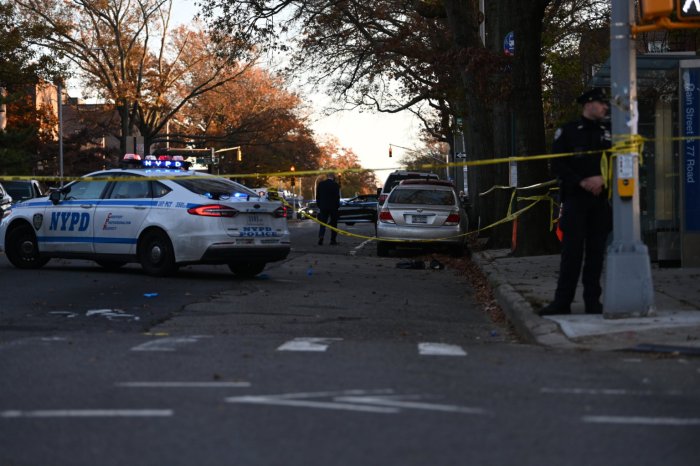By Betsy Scheinbart
Fewer children were hospitalized from asthma last year in Queens than in 1999, city Department of Health statistics showed this week.
Hospitalization rates were down in seven of the 10 Queens neighborhoods listed by the Health Department, including Jamaica and the Rockaways, where asthma is most prevalent in the borough. Asthma rates increased in Bayside-Little Neck, Fresh Meadows and Flushing.
Mayor Rudolph Giuliani and city Health Commissioner Neal Cohen said the asthma hospitalization rate for children up to age 14 in Queens dropped 20 percent from 1999 to 2000.
The rates declined 43 percent in Manhattan, 42 percent in the Bronx, 33 percent in Brooklyn and 31 percent in Staten Island.
Giuliani and Cohen credited the Health Department’s Citywide Asthma Initiative for the decline. The initiative is a series of programs aimed at educating families on how to manage asthma by improving home environments and reducing exposure to dust, mold and pollen, tobacco smoke, inclement weather and other asthma triggers.
“The asthma data being presented today demonstrates that we have achieved a key health objective in reversing asthma hospitalization trends in New York City,” Giuliani said.
The asthma initiative also includes a school-based asthma intervention program, which has reached nearly 21,000 children to date.
Asthma tends to affect children more commonly and more severely than adults, because a child’s airways are smaller and even minor swelling associated with asthma may severely interfere with breathing.
“Reducing asthma hospitalization rates and decreasing the suffering experienced by those with asthma have been among the Health Department’s top priorities,” Cohen said.
In 2000, the rate for Queens children going to the hospital for asthma treatment was 5.6 per 1,000, an improvement from 7 per 1,000 in 1999. A total of 2,022 children were hospitalized with asthma in 2000, down from 2,577 in 1999.
Queens also had a lower rate — 6.4 per 1,000 — than the overall city average. The citywide average declined by slightly more than 25 percent from 1999 and was the lowest last year since 1988.
“The 2000 data not only indicate that the overall rate of asthma hospitalizations declined in each borough and in all communities, but that the disparity in these rates between high- and low-income neighborhoods also narrowed significantly,” Cohen said.
Asthma is often more prevalent in low-income housing areas because asthma attacks can be triggered by the mold left in leaky faucets and pipes or by the cockroaches and rodents that come through holes in the walls.
In 2000, more children were hospitalized in Jamaica than in any other neighborhood listed by the Department of Health. The rate of hospitalizations, however, was highest in the Rockaways with a rate of 8.4 per 1,000.
In Jamaica, the hospitalization rate was 7.65, but it was much lower in southeast Queens overall, at 4.84. Despite the increase from last year, asthma was least prevalent in Bayside-Little Neck, where the rate was 2.25 and in Flushing 3.76.
Rates of hospitalization in western Queens were in the middle of the spectrum, in the range of about five hospitalizations for every 1,000 children.
Reach reporter Betsy Scheinbart by e-mail at Timesledger@aol.com or call 229-0300 Ext. 138.





























